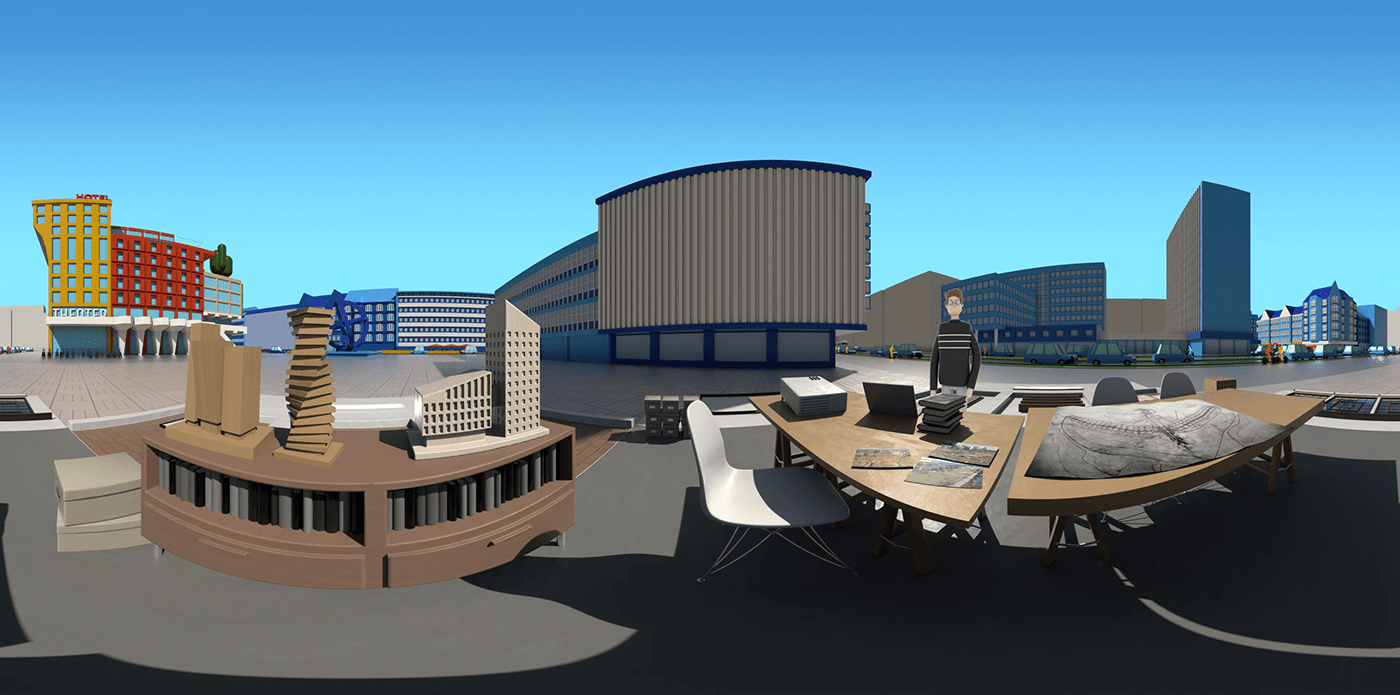
"Stadt.Mensch" is a 360° film made with Cinema 4D, Otoy Octane and various Adobe products. The content is based on the works of Danish architect and city planner Jan Gehl (www.gehlpeople.com), mainly his book "Cities for people" from 2010. His main thesis is that city planning should be focused on what he calls human dimensions. A well planned city has to be interesting at walking speed and cities made for cars should be a thing of the past.
Through the 360° approach the films aims to highlight the key point of human dimensions. Especially when viewed on a VR headset, the idea behind it becomes quite clear.
This film is the practical part og my bachelor project on the potential of film based content in participative urban planning processes.
360° film viewable on mobile devices and VR headsets (Only in German, no subtitles)
Screen capture made with Oculus Go (English subtitles available)

Before the actual production started, extensive research was put into the content of the film. The results did not only influence the script but were used in the design of the objects and environments as well. Multiple real urban planning projects from all over the world are referenced within the film.
A major challenge was the number of objects that had to be build to create a believable cityscape. Multiple buildings, cars, trees, a tram and the main studio environment were all made within five weeks. All in all around 100 objects were used to crate a city layout that had to feature close to real-world dimensions and provide enough space to visualize all the main content points.
The character was animated using the bendy limbs rig from eyedesign and the facial animation was made with Adobe Character Animator.







As already mentioned, the main changes to the cityscape portrayed in the film are based on real-world infrastructure projects. Those projects can be classified in three main categories:
Traffic Infrastructure
Traffic Infrastructure
The first measure shown in the film ist the integration of public transport and bike lanes in a car-oriented urban environment. Building new tram lines or extending existing networks is done in cities all over the world to reduce commuter traffic e.g. in Washington D.C. (USA), Sydney (AUS) or multiple cities in the PR China. The integration of bike lanes is based on a project bei Gehl Architects in Mexico City (MEX) but can be seen all over the world as well.
Use of open spaces / Re-purposing of road space
The reduction of road space in favor of pedestrian areas is heavily inspired by the works shown in "Cities for people". This approach has been used for example at New York's (USA) Times Square.
The removal of the parking garage as shown in the film is not based on a real project but stands as a symbol for the huge amount of space occupied by cars in our cities. The replacement though is a stylized version of a planned development in Hamburg (GER) which was designed in a very open and participative way of urban planning.
The removal of the parking garage as shown in the film is not based on a real project but stands as a symbol for the huge amount of space occupied by cars in our cities. The replacement though is a stylized version of a planned development in Hamburg (GER) which was designed in a very open and participative way of urban planning.
Revitalization of city centers
The changes shown in the film are based on the revitalization of Melbourne (AUS). They represent the idea of a city that has to be attractive at eye-level to be attractive. Yet another key concept of Jan Gehls book. All changes happing on the main square are inspired by various projects in northern Europe, mostly Denmark. The design of all the buildings shown in the film is based on examples from north and central Europe.



Spherically distorted still frame from the animation, same still without the distortion below


Stadt.Mensch
A film by Philipp Quast.
Based on the books "Cities for humans" by Jan Gehl and "Urbanism in the age of climate change" by Peter Calthorpe.
Produced as part of the bachelor thesis "Stadtplanung+Partizipation" at the University of Applied Sciences Europe (UE) in Hamburg.
2020









